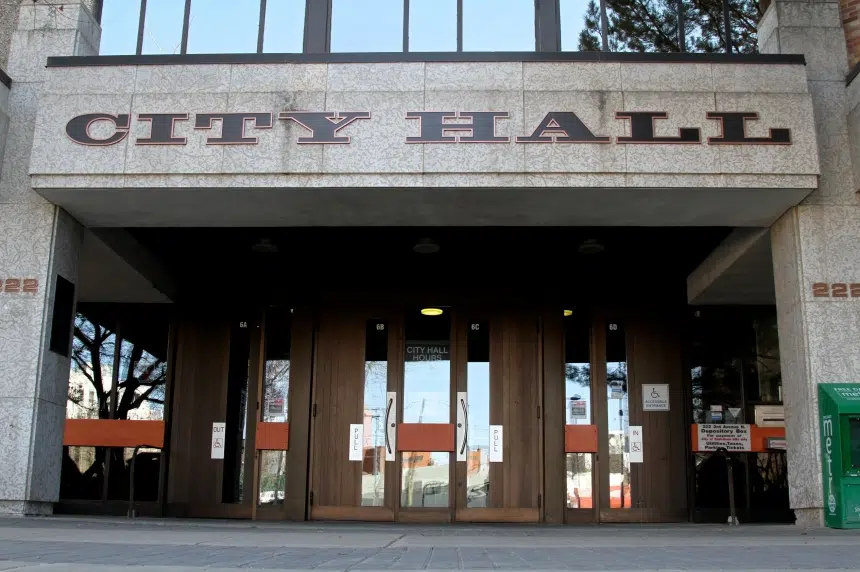City administration in Saskatoon is recommending that residential speed limits be lowered to 40 kilometres per hour from 50 km/h, but city councillors are divided on the issue.
The reduction comes as part of a report tabled Monday by the standing policy committee on transportation in Saskatoon.
For Ward 3 Coun. David Kirton, who based part of his election campaign on reducing speed limits in residential areas, the change could be a safe one.
“If we ended up with 40-kilometre-per-hour speed limits in residential areas, I would not have a problem with that,” Kirton said. “If you’re driving through a crescent anywhere in Saskatoon and you’re doing 50 or 55, I think you’re going too fast for the conditions in that crescent anyway.”
While Kirton said he’s still waiting to hear from “a whole lot of people,” he said constituents in his ward raised concerns during his campaign about roads like Diefenbaker Drive and Confederation Drive.
“Kids are having to cross four lanes of road when cars are going by that fast. That created a lot of concern for me,” Kirton said.
But it’s not a cut-and-dried issue for the councillor, who is appreciative of the lead time given by the release of some of the report’s findings a month before the city’s transportation committee must make a decision.
“That’s going to give a lot of people a lot of time to react and to get ahold of me,” said Kirton, who is planning a town hall for residents of his ward to discuss the merits of changing residential speeds.
That time will be needed to weigh an issue many in the city seem divided on. An earlier survey of the city reported that more than half of Saskatoon residents do not want to see speed limits lowered anywhere.
“I’m still waiting to hear from the residents,” Kirton said. But the councillor doesn’t think a drop from 50 km/h to 40 km/h would be too significant.
“I think most people that are responsible are driving at that,” he said.
The benefit of an official change, however, would be in discouraging those speeding intentionally on Saskatoon streets like Fairlight Drive, Forrester Road and Pendygrasse Road.
“Those racers are going to face higher fines (if limits are lowered) and maybe that’ll cut that down as well,” Kirton said.
Troy Davies, councillor for Ward 4, feels differently about the proposed change. He said it comes down to dollars and cents.
“For me right now, from where we stand and what our projected budget is and without really seeing any of the financial implications on this report to date … this is something that I wouldn’t support at this time,” Davies said.
Though speeding is a problem on some Saskatoon roadways, Davies said the implications of lowering the speed limit would come with “an extremely high price tag.”
Without convincing figures, “I just can’t put this on taxpayers’ backs right now,” Davies said.
“It’s a great idea. As we all know, speed is a major factor in most crashes that we deal with in any city. But at the same time just seeing where things are at right now, I’m comfortable leaving speed limits where they are.”
There’s also the question of enforcement.
“The only way this works is to enforce it and we’d have to go recreate hundreds to thousands of speed zone signs and more importantly, we’d have to hire more police officers,” he said.
Considering the nearly $6-million deficit from last year’s city budget and an increase already granted to police, Davies doesn’t see adding this as feasible.
“Our police services, we’ve heard, are extremely busy,” he said.
Though he hasn’t had lots of feedback yet specific to lowering speed limits, Davies feels there are more pressing issues facing his constituents.
“Times are tough right now,” he said. “I have people who have lost jobs (and) their main concerns are tax increases … We’re seeing some increases on sewage charges. The bills keep going up and we’re still not out of this pandemic.”
Time to decide
Saskatoon’s standing policy committee on transportation will not decide on whether or not speed limits should be lowered until Sept. 7. Should the recommendation be approved, city council would then put the issue to a vote.
“As it stands right now — and I’ve got a month to have my mind changed by my residents — I’m feeling like a 40 km/h limit on residential streets is where I’d like to go,” Kirton said.
But he stressed there is still a month to make the decision and many conversations to be had in the meantime. Arterial and collector roads are a topic of discussion, for example.
“They’re still residential streets, like Pendygrasse and Forrester and the like, but they’re arterial roads so there’s a lot more traffic on those roads. Should those also change?” Kirton asked.
Hilary Gough, councillor for Ward 2 in Saskatoon, lives on a collector street.
“I’m really curious to hear what people have to say about the inclusion of collector streets in the potential change to 40 kilometres per hour,” she said.
“I’m kind of looking at this thinking it could kind of go either way with those collector streets, but I’ve also heard really clearly in my own neighbourhood that around some of our parks and playground areas, people are really concerned about speed.”
For this reason, Gough feels the residential areas in her neighbourhood and throughout Ward 2 could benefit from a lower speed limit.
“We often hear concerns about speed that just haven’t exceeded that 50-kilometre-per-hour threshold and I know for the park nearest my house, that’s the case,” Gough said. “People are really looking for a slowdown here.
“Sadly, there have been some pedestrian collisions in the past number of years in the Ward 2 area and some of those have probably been on arterial streets.”
Both Kirton and Gough stressed the importance of learning more before making any decisions, should the issue come to a vote before city council.
Looking to the cities of Calgary and Edmonton, Kirton likes the idea of lowering speeds for only truly residential streets while leaving roadways with more significant traffic at 50 km/h.
“I don’t want to slow the whole city down to 40,” Kirton said.











